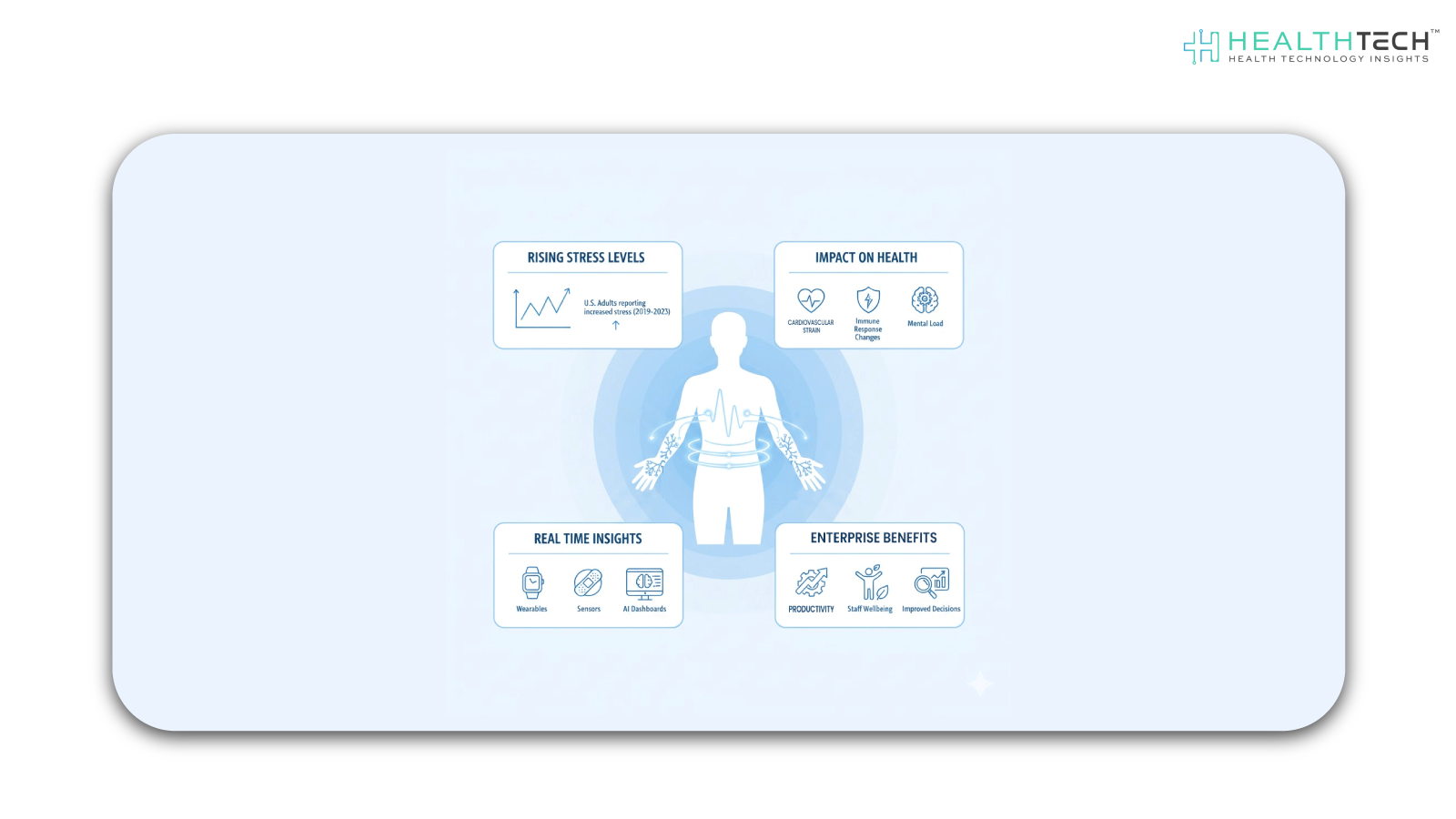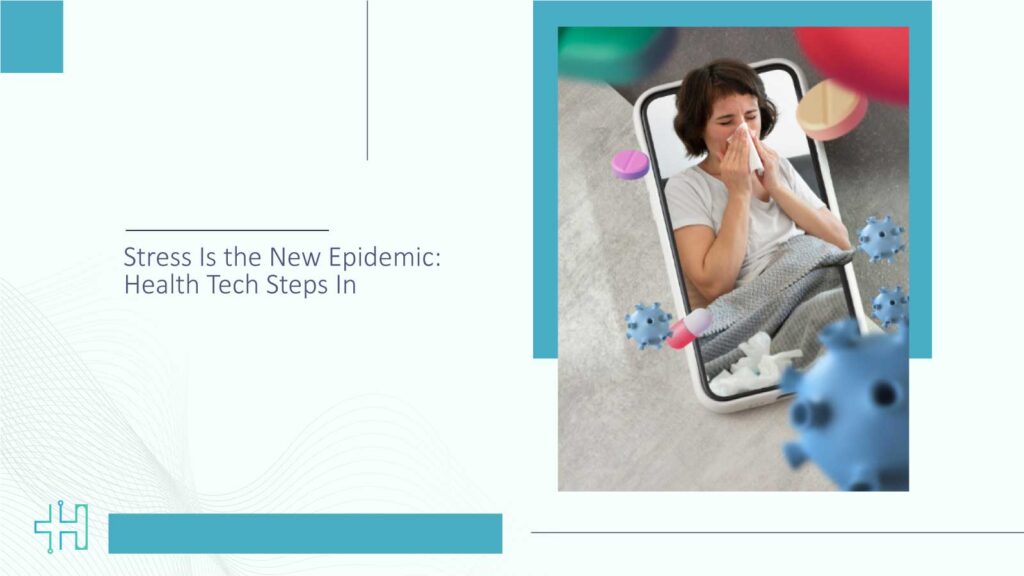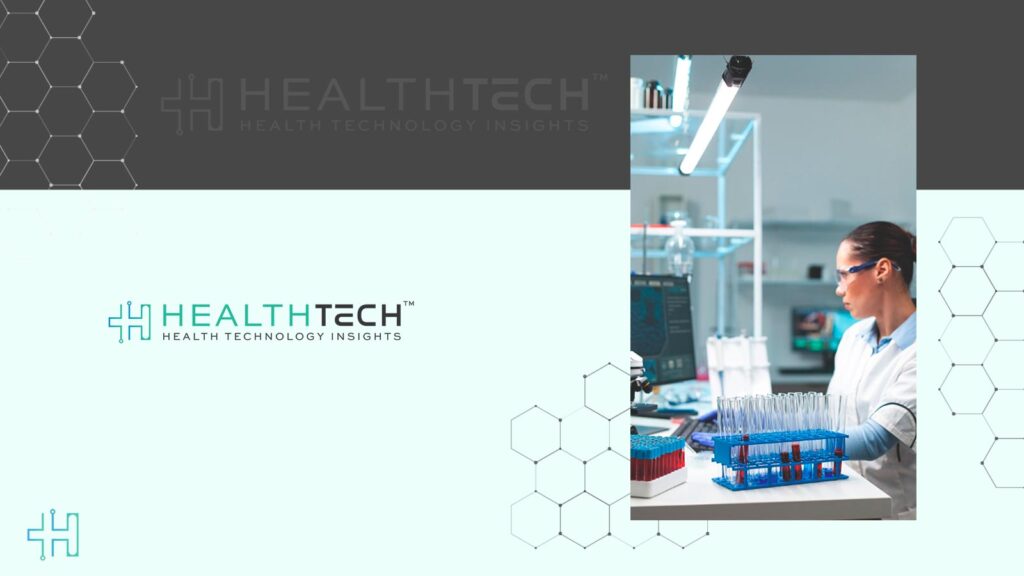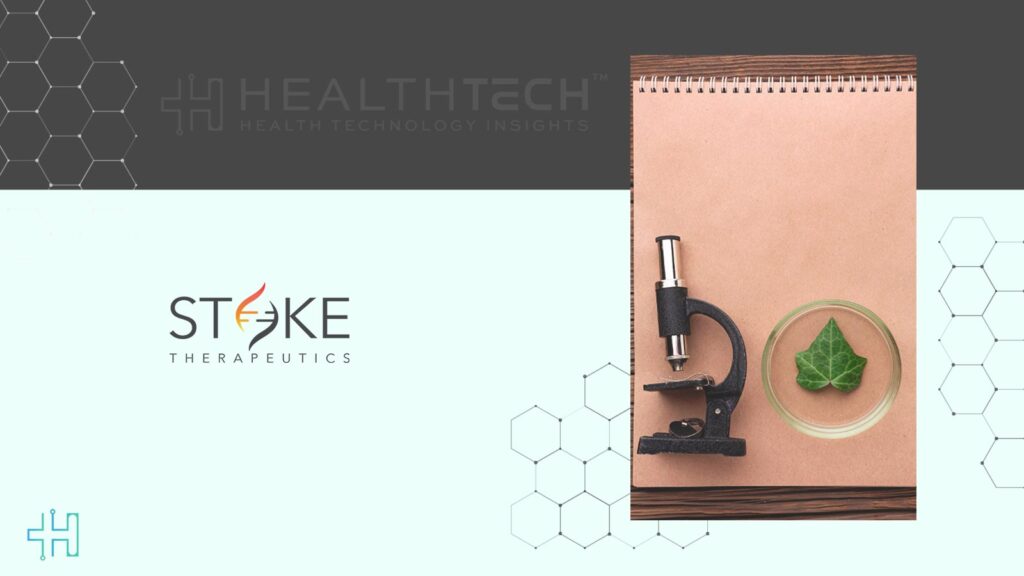Stress is rising in every workplace, yet most organisations still treat it as an individual issue. The real shift begins when stress is viewed as a system pattern that modern health tech can finally measure and manage.
Health tech now offers the capability to track that influence, predict its rise, and respond at scale. It has the ability to detect and mitigate stress, which is linked to operational stability, workforce retention, and better outcomes.
Why Stress Now Demands Executive Attention
Stress is no longer a private concern. It shapes enterprise performance at scale. Workforce well-being influences productivity, talent retention, and innovation capacity.
When stress escalates, your organisation feels it in slower decisions, rising fatigue, and reduced clarity. Executives recognise that transformation, staffing gaps, and digital overload all intensify stress. This makes it a strategic factor in long-term competitiveness.
The Business Cost of Ignoring Stress
Executives often track financial, operational, and experience metrics. Stress indicators now deserve similar attention. Sustained stress leads to higher turnover, more errors, and a decline in creativity.
These outcomes influence profitability and care quality. By quantifying stress through validated health tech tools, leaders can introduce early interventions that protect output, culture, and performance.

How Health Tech Turns Stress Into Actionable Data
Modern health tech measures stress with real-time precision. Wearables, AI models, and biometric analytics detect shifts in heart rate variability, skin conductance, and behavioural patterns. This converts stress from a vague experience into a measurable data signal.
This visibility supports strategic planning. Leaders can link stress patterns to specific workflows, schedules, or technology friction. They can then guide targeted improvements rather than broad emotional support campaigns.
Clinical psychologist Adam Borland explains: “Experiencing a manageable amount of anxiety and worry helps prepare us to face the challenges of daily living.”
Use Cases for Stress Technology
Workflow optimisation
Executives can identify peak stress windows within clinical or operational teams. Leaders can redesign schedules, staffing, or interface flow to reduce strain.
Talent stability
Stress data helps leaders understand which teams carry the highest cognitive loads. This helps shape leadership coaching, support models, and retention plans.
Quality and safety improvement
Higher stress correlates with more mistakes. Monitoring prevents these situations by creating early alerts. This supports safer patient care and better decision accuracy.
Executive decision modelling
Stress signals can feed into predictive models. Leaders can anticipate workforce strain during major rollouts. This helps reduce disruption and maintain productivity.
A relevant Cleveland Clinic research states: “Chronic stress decreases your body’s lymphocytes, the white blood cells that help fight off infection. The lower your lymphocyte level, the more at risk you are for viruses, including the common cold and cold sores.”
What Health Tech Leaders Should Look for in Stress Solutions
Validated biometric accuracy
Tools must rely on scientifically verified biomarkers. Decision-makers need clear evidence of reliability.
Enterprise integration
Stress data must connect to workflows, dashboards, and HR systems. Fragmented insights add little value.
Actionable personalisation
A strong solution guides next steps. Leaders should prefer tools that prompt timely micro interventions.
Clear privacy models
Executives must protect employee trust. Transparent data handling makes adoption smoother across the organisation.
Scalable analytics
C-suite decisions require scalable dashboards that reveal patterns across functions and departments.
Leadership Mindset for the New Stress Landscape
Executives who succeed treat stress as a driver of system behaviour. This mindset shifts organisations from reactive wellness efforts to proactive optimisation.
Leaders who embrace this approach create cultures that promote clarity, resilience, and performance. They use data to guide action rather than waiting for burnout to appear.
Future of Wellbeing Through Intelligent Health Tech
Stress is shaping the way organisations work, grow, and innovate. We’re now at a turning point where well-being is no longer an isolated concern. It is a strategic force that influences productivity, culture, and long-term resilience.
Modern health tech gives leaders the clarity they need. It turns stress signals into insights that support smarter decisions and stronger performance.
The future belongs to leaders who see wellbeing as a strategic asset. Those who invest in intelligent stress technology will build systems that support people before the strain becomes visible. They will champion cultures where clarity replaces overload and where care for the workforce becomes a catalyst for innovation.
FAQs
1. Why is stress considered an epidemic now?
A significant portion of the population experiences sustained stress, not occasional peaks. For example, over half of U.S. adults identify stress as the top factor impacting mental health.
2. How can health-tech realistically monitor stress?
Technologies use wearable sensors to track physiological signs of stress (HRV, skin-conductance, etc.) and apply machine learning to interpret the data. A 2024 review confirmed that wearables enable continuous stress detection and monitoring.
3. Does a stress-monitoring device replace a clinician?
No. These devices support detection and monitoring; they do not replace clinical diagnosis or therapy. Health-tech for stress aids early alert and data-driven intervention, but human judgment remains central.
4. What are the operational benefits for organisations?
For organisations, deploying stress-monitoring health-tech can reduce errors, improve productivity, lower turnover, and cut absenteeism tied to strain.
5. What should health-tech leaders prioritise when integrating stress-monitoring?
Focus on three things: validity of the biometrics (are the sensors accurate and clinically relevant), integration (does the data feed into workflows, HR, EHR, analytics), and actionability (are there built-in feedback loops for intervention when strain is detected).
Dive deeper into the future of healthcare. Keep reading on Health Technology Insights.
To participate in our interviews, please write to our HealthTech Media Room at info@intentamplify.com




